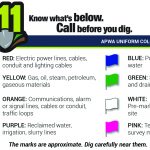
Tips for Working During Heat Waves
Although this has been a somewhat mild spring here in the northeast, the high-heat months of summer are here. If you have employees whose work responsibilities are primarily outdoors, you need to plan accordingly to avoid heat-related illnesses and fatalities.
Here are our tips for managing work when the heat index reaches dangerous levels.
- Know the forecast.
Before beginning the work week, take a look at the forecast so you know which days will be hot. And then check again on a daily basis to assess risk. Download a weather app to your phone or use the one that OSHA created specifically for heat safety. OSHA’s app is available for both Apple and Android phones, in English or Spanish. You can get a location-based calculation of the heat index where you are and a low to high risk level. Based on the risk level, it will also give you precautionary measures that can be taken.
Remember: the temperature alone is not enough to base your precautions on. Instead, use the heat index, which takes into account humidity levels as well.
- Provide shade, rest, and water.
When the heat index is high, workers should have more frequent breaks, plenty of water, and a shaded place to rest. Plan ahead to ensure you have adequate supplies (water coolers, cups, shade devices, fans, etc.).
Remember: new workers or those coming back to work after a week or more off, will need more frequent breaks and less strenuous tasks until they become acclimatized to the heat.
- Train workers.
Have a toolbox talk every day that dangerous heat levels are expected. Explain the methods being used to reduce risk. Teach workers to know the symptoms of heat stroke, heat cramps, heat exhaustion, and heat rash. Everyone should be aware of what they should do if they feel any symptoms themselves, or notice them in others. Review the emergency action plan.
Remember: Working in direct sunlight can increase the heat index by 15 degrees. Encourage workers to wear sunscreen or work in the shade whenever possible.
- Create a Heat Stress Management Plan.
If your employer doesn’t already have one in place, request that they create one. A heat stress management plan is just what it sounds like, a plan for what to do when the heat index reaches hazardous levels. It’s a written plan that outlines the company’s procedures and can be modified to meet the needs of your particular jobsite. A good plan will account for work/rest cycles, acclimatization practices, rest areas, and specific actions that will be taken at the worksite based on the heat index level.
Remember: Enforce rest periods.
A fatality will hold up your schedule much more than a 15 minute break in the shade. During rest periods, workers should be seated in the shade, drinking water, and engaged in only very light activities such as attending a meeting, completing paper work, or watching a training video.
For more information on preventing heat-related illnesses check out OSHA’s Campaign to Prevent Heat Illness in Outdoor Workers.
Need help writing a Heat Stress Management Plan? Contact CCI.
Need Heat Stress training for your workers?
CCI can do that too!



